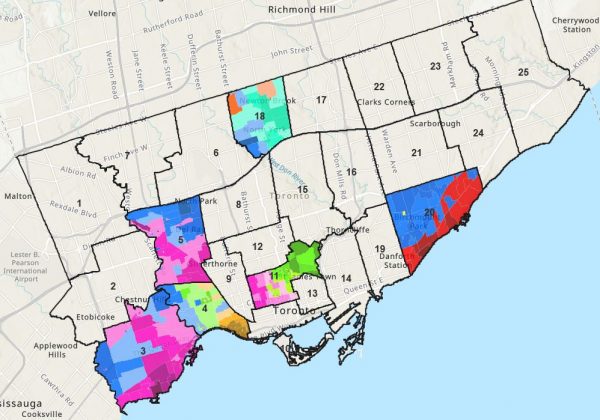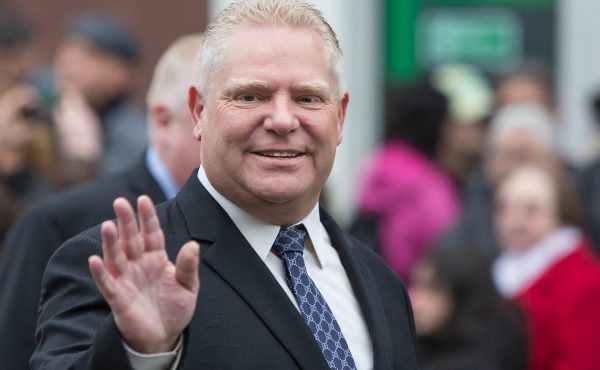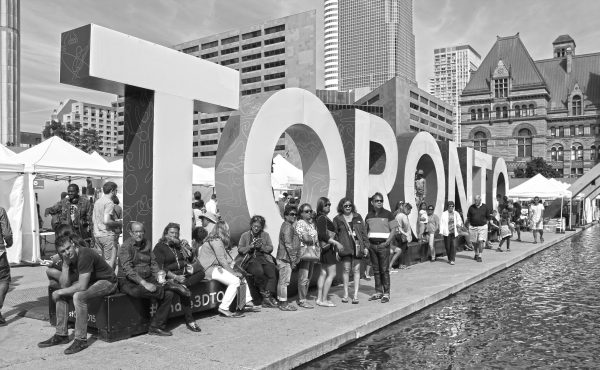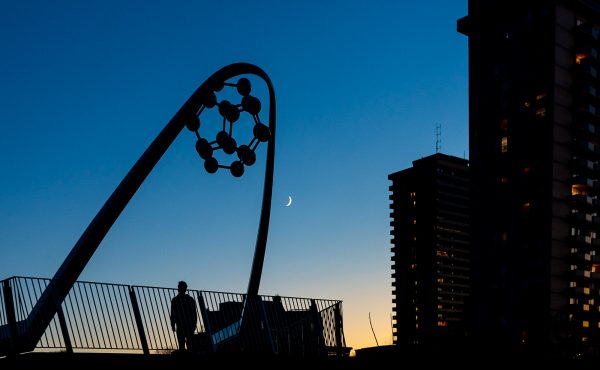In the lead-up to last month’s municipal election, news reporters, columnists, and popular local websites called the mayoral race “dull,” “boring,” or “quiet.” In some regards, it was, and that is how front-runner John Tory — who spent most of his time campaigning for his preferred council candidates, while making no policy announcements and few public appearances — liked it. Though urbanist Gil Penalosa brought big ideas to the table, and though Chloe Brown (who spent less than $2,000 on her campaign) masterfully called out Tory’s inaction on housing, poverty, and opportunities for younger people, not enough people were paying attention.
Mayor Tory came in first place with 62% of the vote, followed by Penalosa with 17.8%, and Brown with 6.3%. At the local voting subdivision level, Tory came in first place in all but 92 of 1433 areas, while Penalosa placed first in 82. (Brown placed first in one poll, at a new condo apartment building at Dundas and Jarvis, while nine subdivisions were ties). Penalosa’s support was concentrated in the west end of the old City of Toronto, in neighbourhoods like Bloorcourt, Harbord Village, Dovercourt, and parts of The Junction and Parkdale, and on the Toronto Islands. In the map below (an interactive map is available here), election subdivisions that voted for Tory are shaded in blue (with darker shades indicating higher margins of win in each poll), while areas that voted for Penalosa are shaded in purple.

Far more interesting were some of the council races.
As part of his electoral strategy, John Tory spent much of his time and resources supporting 12 candidates for council, including veterans such as Mark Grimes (Ward 3) and Frances Nunziata (Ward 5), and challengers such as Siri Agrell (Ward 4) and Grant Gonzales (Ward 9). Progress Toronto, a left-leaning advocacy group, supported nine “champions.” In addition, seven wards had no incumbent councillor running for re-election. In the end, one incumbent councillor went down in defeat, the sudden and untimely death of first-term councillor Cynthia Lai led to the election of one of her challengers, and two former councillors returned to office. And although most of Tory’s picks won council seats, not all were chosen by the electorate. Just because the mayor himself is popular enough, it remains clear that City residents are able to make up their own minds on the composition of council. A warning, perhaps, as Tory is about to take on greater powers courtesy of the provincial government led by Doug Ford.
Spacing selected six wards to examine more closely, as these wards had the tightest races and some of the most interesting geographical divides.
Ward 3 – Etobicoke-Lakeshore
In 2014, facing a challenge from community activist Russ Ford, then Ward 6 councillor Mark Grimes secured the support from former Rogers executive, Progressive Conservative leader, and talk show host John Tory, who was making his second run for Mayor of Toronto. Tory’s robocalling in favour of Grimes helped secure the latter’s re-election, while quashing the hopes of Russ Ford. In 2018, again facing a new progressive challenger — Amber Morley — Grimes was able to count on the support of Mayor Tory’s re-election campaign. This was despite Grimes being under provincial police investigation for election campaign violations.
In 2022, Mark Grimes’ luck ran out. Though he was — for the third time — endorsed by John Tory — voters had a different idea. Though Tory placed first in every electoral subdivision in Ward 3 in 2022, Amber Morley, running for a second time and with the support of Progress Toronto, placed first with 46% of the vote to Grimes’ 40%. Though voters in the Humber Bay Shores condo cluster were split, Morley placed first in nearly every poll in Mimico, New Toronto, Long Branch, and Stonegate, as well as many of the condo and rental towers near Kipling and Islington Stations. Grimes did best in the affluent Kingsway neighbourhood and in Aldershot.
Morley’s strong showing in 2018 and her win in 2022 should be an inspiration to young, progressive challengers to established politicians, even those with deep institutional support.
In the map below, electoral subdivisions where Grimes placed first are shaded in Tory blue, while polls where Morley won are shaded in purple.(Click here for the interactive version.)

Ward 4 – Parkdale-High Park
When Siri Agrell announced her candidacy for Toronto City Council in Ward 4, observers expected a showdown between longtime incumbent Gord Perks, an outspoken progressive councillor and critic of Mayor John Tory, and Agrell, a former Globe and Mail urban affairs reporter and advisor to former premier Kathleen Wynne and current mayor John Tory. It was thought that Agrell could beat Perks and be a reliable ally to the mayor, who was already plotting his own re-election.
Perks, who has been in municipal office since 2006, drew the ire of constituents in 2021 and 2022, partly for failing to address dangerous driving on Parkside Drive, while being unresponsive when the Toronto Police set up speed traps in neighbouring High Park to ticket cyclists — and only cyclists — for not stopping at stop signs and for going over the 20 km/h limit. As it turned out, it was a fellow progressive, and not Agrell, who posed the biggest threat to Perks’ incumbency.
Chemi Lhamo, a Tibetan-Canadian urbanist and neighbourhood activist in Parkdale, placed second in Ward 4, netting 31.6% of the total vote. She drew support from across the ward, not just in Parkdale, where she placed first in most polls. Lhamo did very well in the Junction, the High Park neighbourhood, and even in south Swansea’s rental and condominium buildings. Agrell came in third place, with just 25.7% of the vote, placing first in only a few polls in the affluent Swansea, and Baby Point neighbourhoods, and a few other scattered places. Perks was able to win 35.4% of Ward 4’s vote with the support of the Runnymede Road area, the area immediately to the north of High Park, some of the rental building clusters, and by placing second in every subdivision where he didn’t place first. (Click here for the interactive version.)
Morley’s example in neighbouring Ward 3 should be inspiring should Chemi Lhamo choose to run again.

Ward 5 – York South-Weston
Ward 5 was another showdown between a Tory-endorsed veteran councillor and a progressive challenger running for their second time. Frances Nunziata, first elected to the City of York Council in 1988, faced off against Chiara Padovani, who previously ran in the ward in a crowded field in 2018. Unlike in Ward 3, where the young champion defeated the establishment councillor, Nunziata prevailed, but only by 94 votes.
The map below shows the vote split between Nunziata (whose margins of win per electoral district are shaded in Tory blue) and Padovani (shaded in Progress Toronto purple). Padovani placed first in much of Weston, most of Mount Dennis, and the Stockyards area, as well as two polls along Lawrence Avenue that are largely made up of older rental apartment buildings. Nunziata placed first in the north and northeastern parts of the ward, areas with large Italian-Canadian populations that have been loyal to the Nunziata Family. The incumbent candidate also did very well in the Lambton Square condominium cluster on Scarlett Road (where Nunizata herself lives) and in senior housing voting locations. (Click here for the interactive version.)

Ward 11 – University-Rosedale
With the announcement that three-term councillor Mike Layton was not going to run for re-election in 2022, Ward 11 became one of four downtown wards where someone new was guaranteed to get election. But of the those four wards, Ward 11 was the only one to result in a divided, close race.
In Ward 9 – Davenport, Ana Bailão stepped down after three terms on council, a centrist who generally supported John Tory’s agenda. Though Tory supported Grant Gonzales — a former lobbyist and Pride Toronto board member — Progress Toronto-backed candidate Alejandra Bravo took 71% of the vote there.
In Ward 10, Joe Cressy stepped down after two terms — his work chairing the Toronto Board of Health during the COVID-19 pandemic and the massive workload representing a high-growth ward taking their toll. Though there were 12 candidates vying for that open spot, TDSB trustee Asuma Malik won with a decisive 36.6% of the vote, with second-place April Engelberg netting 21.3%. Malik ran for council in 2018, before withdrawing after Doug Ford’s newly elected Conservatives cut council from 47 to 25 wards in the middle of the election campaign.
Ward 13, represented by now-NDP MPP Kristyn Wong-Tam, was won by TDSB trustee Chris Moise, who also ran for council in 2018 and later withdrew due to the cut in the number of wards. In a field of nine candidates, Moise got 48.5% of the vote.
Unlike the other three open downtown seats, only Ward 11 featured a tight race, with clear geographic patterns.
Norm Di Pasquale, like Bravo, Malik, and Moise, was backed by Progress Toronto. A Toronto Catholic school board trustee, Di Pasquale ran for the federal NDP in Spadina-Fort York in the 2021 federal election, only to lose by a tight margin to disgraced Liberal candidate Kevin Vuong. Robin Buxton Potts, the executive assistant to Councillor Wong-Tam, was appointed councillor for Ward 13, though she decided to run in Ward 11 after Mike Layton announced his retirement from public office. Dianne Saxe, Green Party candidate for University-Rosedale in the 2022 provincial election, also put her name forward.
On election day, Saxe placed first with 35.4% of the vote — just 123 votes ahead of Di Pasquale (who got 34.9%). Buxton Potts lost her gamble, coming in a distant third and netting under 9% of the vote. The map below, which shows how each candidate did at each polling station, really shows the dichotomy between the University part of University-Rosedale and the Rosedale part.
The most affluent parts of the ward — Rosedale, Moore Park, Governor’s Bridge, and the eastern Annex — supported Saxe (areas shaded in green), while the western Annex, Palmerston, Seaton Village, and north Chinatown supported Di Pasquale (areas shaded in purple). Condo towers along Charles, Bay, and Bloor Streets split the vote between the two. (Click here for the interactive version.)

Ward 18 – Willowdale
Early in 2018, Councillor John Filion announced his retirement, while endorsing two candidates for the new 47-ward model, his executive assistant Markus O’Brien Fehr, and Lily Cheng, a local community activist. After Doug Ford’s sudden decree that Toronto should have just 25 wards, Filion made an about-face, put his name back into the ring, and O’Brien Fehr stepped back in deference to his boss. Cheng remained in the race, however, coming in second place in 2018.
With Filion once again resigning in 2022, O’Brien Fehr put his name forward, and so did Cheng. O’Brien Fehr secured John Tory’s endorsement, as well as the support of More Neighbours Toronto, an advocacy group promoting increased residential densities across the city. In Willowdale, a plan for a modular housing project to house formerly homeless people, supported by Tory, Filion, and O’Brien Fehr, was opposed by neighbouring homeowners; the “Voices of Willowdale” opposition group also had the support of Cheng. Meanwhile, the provincial government (represented in Willowdale by PC MPP Stan Cho) stalled on fast-tracking the approval of the modular home development. Daniel Lee, past federal Conservative candidate, ran on a platform opposing cycling infrastructure on Yonge Street in North York Centre.
In her second bid for council, Lily Cheng came first, with 41.7% of the vote, while O’Brien Fehr got 33.6%. Lee came in third, with 23.1%. O’Brien Fehr only placed first in a handful of constituencies, all but one located west of Yonge Street, and none near the Cummer Avenue housing site (in all electoral subdivisions within 750 metres of the site, he placed third).
The map below shows the vote by electoral subdivision. Polls where Cheng placed first are in green, areas where O’Brien Fehr placed first are shaded blue, and areas where Lee came first are shaded in orange. (Click here for the interactive version.)

Ward 20 – Scarborough-Southwest
Prior to 2018, Southwest Scarborough was represented by two right-leaning councillors: Gary Crawford and Michelle Holland-Berardinetti. When the 25 wards were imposed, Crawford and Holland-Berardinetti — both reliable Tory allies — duked it out, with the poll-by-poll result closely matching each councillor’s former ward boundaries. Crawford easily placed first in polls south of the Lakeshore East GO Line, while Holland-Berardinetti taking the north half, though Crawford eked out a win in the end.
In 2022, Gary Crawford was seeking yet another term, and he had the support of Mayor Tory. Councillor Crawford’s challengers included past Scarborough councillor and former Liberal MPP Lorenzo Berardinetti (and spouse of Michelle Holland-Berardinetti), TDSB Trustee Parthi Kandavel, and Cycle Toronto campaigns manager Kevin Rupasinghe. Rupasinghe had the endorsement of Progress Toronto.
Though Crawford won a fourth term in Toronto City Council with 35% of the vote, his key challenger was Kandavel, who netted 29.6% and had a very strong showing in the south side of the ward, in areas closest to the Lake Ontario shoreline and the ward’s most affluent neighbourhoods. Crawford placed first throughout the rest in the ward, particularly areas that he placed second to Holland-Berardinetti in 2018. For his part, Lorenzo Berardinetti came in fourth (with just 11.8% of the vote), and placed first in only one poll — Providence House Long Term Care home. Meanwhile Rupasinghe placed third with the support of 13.7% of Ward 20 voters.
In the map below, the electoral subdivisions where Crawford placed first are shaded in Tory blue, while polls where Kandavel placed first are in red. The lone subidivison where Breardinetti placed first is highlighted in yellow. (Click here for the interactive version.)

With the defeat of Mark Grimes and the death of Cynthia Lai, Mayor Tory is down two reliable votes at City Council. Though conservative councillors Vincent Crisanti (Ward 1 Etobicoke North) and Jon Burnside (Ward 16 Don Valley East) returned in 2022, they themselves took over seats left vacant by Michael Ford and Denzil Minnan-Wong respectively. But Tory still has plenty of allies to work with, and with new mayoral powers granted by the province, that may not even matter.
But Willowdale may prove to be a test for John Tory. Does he put his pro-housing rhetoric into action, using new “strong mayor” powers to build the modular housing on Cummer Avenue and affordable housing projects elsewhere over local objections, or does he find allies in new councilors like Lily Cheng?





One comment
Note that the poorest parts of Perks riding did not vote for him. Progressive?